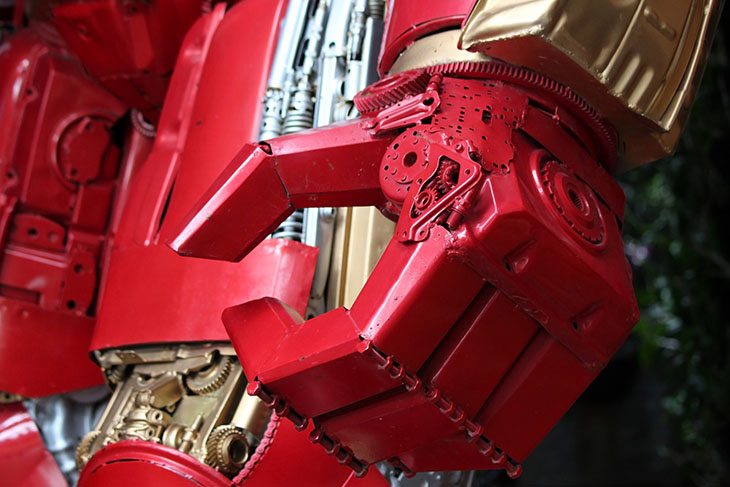The recent strike by Boeing machinists has brought to light the complex challenges facing one of the world's largest aerospace manufacturers and sheds light on critical challenges facing all aircraft manufacturers. As over 33,000 workers walked off the job, rejecting a contract that offered a 25% wage increase over four years, the industry finds itself at a perilous moment in its history. This labor dispute not only highlights the evolving expectations of skilled workers but also underscores the need for innovative solutions to address both employee concerns and company goals and objectives.
The Current Situation
Boeing, already challenged with financial setbacks and reputational damage, now faces a significant disruption to its production lines. The strike affects the assembly of key aircraft models, including the popular 737 Max, the 777, and the 767 cargo plane. With production halted and the company implementing cost-cutting measures such as hiring freezes and potential temporary layoffs, the stakes are high for both Boeing and its workforce.
The machinists' demands go beyond mere wage increases, reflecting broader concerns about job security, work-life balance, and the changing nature of manufacturing work. This situation presents an opportunity to examine how advanced technologies could play a role in addressing these challenges while potentially bridging the gap between worker expectations and company needs.
The Role of Advanced Technologies
Augmented Reality (AR) and Virtual Reality (VR) technologies have the potential to further modernize aircraft manufacturing processes. By implementing these tools, Boeing could offer its machinists enhanced training experiences and on-the-job support, potentially leading to increased job satisfaction and efficiency.
AR and VR can create immersive training environments where machinists can practice complex assembly procedures without the risk of costly mistakes. This approach not only accelerates the learning curve for new employees but also allows experienced workers to continuously update their skills, addressing concerns about job security in an evolving industry.
AR overlays can provide step-by-step instructions directly in a worker's field of view, reducing errors and increasing productivity. This technology could help machinists perform their tasks with greater confidence and accuracy, potentially leading to improved job satisfaction and a sense of empowerment.
Automation and Robotics
While the introduction of automation often raises concerns about job displacement, strategic implementation of these technologies could actually enhance the role of skilled machinists.
Collaborative Robots: By introducing collaborative robots (cobots) to handle repetitive or physically demanding tasks, Boeing could alleviate some of the strain on its workforce. This approach allows machinists to focus on more complex, value-added activities that require human judgment and expertise.
Quality Control: Automated inspection systems can work alongside human inspectors to ensure higher levels of accuracy in aircraft assembly. This not only improves overall product quality but also reduces the pressure on individual workers to catch every potential defect.
Benefits for Aircraft Manufacturers
The integration of these advanced technologies offers numerous advantages for companies like Boeing:
1: Increased Efficiency: By streamlining processes and reducing errors, these technologies can significantly boost production efficiency. This could potentially allow Boeing to meet delivery deadlines more consistently, a crucial factor in maintaining customer satisfaction and market competitiveness.
2: Enhanced Accuracy: The precision offered by AR guidance systems and automated quality control can lead to higher-quality aircraft, reducing the need for costly rework and improving overall safety standards.
3: Flexibility in Design and Testing: Virtual prototyping and simulation capabilities enable faster iteration in aircraft design and testing phases. This agility can help manufacturers respond more quickly to market demands and regulatory changes.
4: Improved Maintenance: AR systems can assist not only in manufacturing but also in aircraft maintenance, providing technicians with real-time data and instructions. This can lead to faster turnaround times for repairs and reduced downtime for airlines.
Workforce Development Strategies
Implementing these technologies as part of a comprehensive workforce development strategy could address some of the underlying issues in the current labor dispute.
By offering training programs that incorporate these new technologies, Boeing could demonstrate a commitment to its workers' long-term career development. This approach could help alleviate concerns about job security in the face of technological change.
As routine tasks become automated, machinists could be upskilled to take on more complex roles that involve working with and managing these advanced systems. This evolution of job responsibilities could lead to higher job satisfaction and potentially justify higher wages.
The integration of cutting-edge technologies could make careers in aerospace manufacturing more appealing to younger generations, helping to address potential skill shortages in the future.
Looking Toward The Future
The current strike at Boeing represents more than just a disagreement over wages; it's a reflection of the changing landscape of manufacturing work. By embracing advanced technologies and integrating them into a forward-thinking workforce development strategy, Boeing has the opportunity to not only resolve the immediate labor dispute but also position itself as a leader in the future of aerospace manufacturing.
The key to success will lie in finding a balance between technological advancement and worker empowerment. By involving machinists in the process of implementing these new technologies and demonstrating how they can enhance rather than replace human skills, Boeing could create a more engaged and productive workforce.
As the aerospace industry continues to evolve, the companies that can successfully navigate the integration of advanced technologies while addressing the needs and concerns of their skilled workforce will be best positioned for long-term success. The current challenges facing Boeing could serve as a catalyst for positive change, leading to a more efficient, innovative, and worker-friendly manufacturing environment.

About The Author: Dijam Panigrahi is Co-founder and COO of GridRaster Inc., a leading provider of cloud-based AR/VR platforms that power compelling high-quality AR/VR digital twin experiences on mobile devices for enterprises. For more information, please visit www.gridraster.com.




















